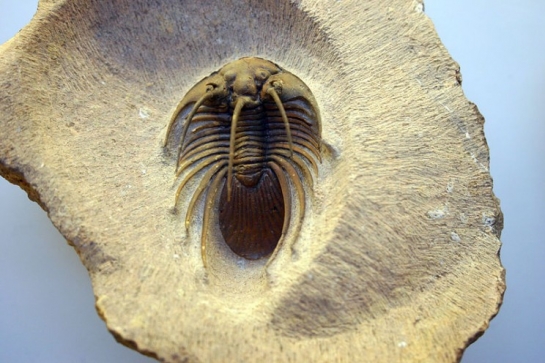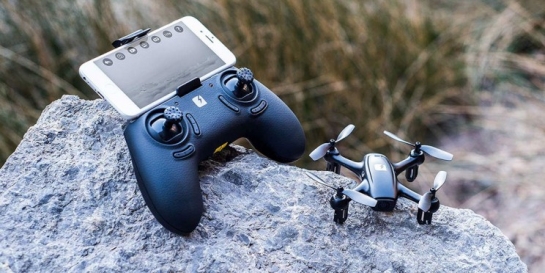 RESLAB | Teknik Komputer Universitas Andalas
RESLAB | Teknik Komputer Universitas Andalas
RESLAB | Teknik Komputer Universitas Andalas
RESLAB | Teknik Komputer Universitas Andalas
The great thing about shopping online is you don’t have to worry about a pushy salesperson trying to upsell you on something.
The downside of shopping online for electronic items is you might need someone to help you figure out how to use your gadget and have it sync up with your other Wi-Fi-connected products. Companies are realizing there’s a need for home tech support as electronic devices become more sophisticated and consumers are willing to pay for the help.
In late May, Best Buy launched Best Buy Total Tech Support Powered by Geek Squad, offering unlimited technical support in-person, over-the-phone or online, for an annual fee of $199. Purchasers also receive discounts on other items. Best Buy has offered technical support of individual items purchased at the company, but plan purchasers will get help on all their devices no matter where or when they purchase them.
Personalized tech support is a growing trend. Amazon Home Services offers setup of individual technology products, like wireless home network setup or home audio setup. Puls.com offers in-home support for iPhone repair, TV and smart-home setup. HelloTech offers monthly service plans, from $9.99 for remote online service of your computer, to $19.99 a month for remote online service of your computer and three in-home services.
Ben Arnold, senior director of innovation and trends at the Consumer Technology Association, said new consumer technology takes a little more training for the user. While it might be easy enough to connect a smart-home security system to your Wi-Fi, learning how to use advanced features, like searching the archives footage or protecting yourself against security or privacy threats, may take some training.
Arnold said offering home-tech services is another way for retailers to build relationships with consumers that might be missing with simple online shopping.
“It’s more about starting this longer relationship in which the store hopes that I come back for additional purchases. The service element is a way to keep me engaged with the retailer,” he said.
Trish Walker, president of Best Buy Services, said Total Tech Support takes a holistic view of all of a home’s electronic products.
“As technology has evolved over time, all of these products are all connected. When you have an issue or you want to learn something new, many times it’s not just an individual product (people need help with). It is actually the ecosystem that is supporting your life,” Walker said.
Patrice Samuels, senior analyst at Parks Associates, a market research company specializing in emerging consumer technology products and services, said demand for traditional technology support, like fixing bugs in computers or tablets, is falling as those devices are becoming more reliable.
Consumer questions now are about wireless connectivity and other network connectivity questions, whether those are traditional devices or smart home and/or other emerging technology, she said.
Walker concurred that customers often have connectivity questions as they acquire more devices and it becomes more complicated to get these devices to interact correctly.
While individual manufacturer websites may offer extensive information online for the do-it-yourself person, that person may hit a knowledge wall or just might want to have someone else do the setup for them. Samuels said consumers who have issues with their newly purchased devices, whether purchased online or in a store, often contact the manufacturer first for help, especially when it comes to smart devices.
The manufacturer may offer buyers support resources to get the product running. “Some companies are willing to provide that at no cost to the consumer because the bottom line is (they) need adoption to grow (and they) need more people to be aware of their product,” she said.
In other cases, manufacturers partner with recommended providers to give that support, such as the partnership video doorbell manufacturer Ring has with HelloTech, offering discounted installation services to get the doorbell working, she said.
Arnold said he wouldn’t be surprised to see these personalized technology support services grow.
“It’s an acknowledgement that we buy different brands with different technologies. But if the products that I bring into my home don’t work with each other, I don’t think anybody wins. You may end up having an unfavorable view of this retailer or a brand if I can’t get those things to work. To me it seems like a way to help consumers, and in the end, it helps the retailers and manufacturers,” he said.
The “Easy-Bake” fossils were developed by mimicking the fossilization process using high heat and pressure.
By Kashyap Vyas
Development of fossils takes a considerable amount of time. With considerable we mean millions of decades without any exaggeration. But according to the recent news, a group of researchers has now learned a technique of making proper fossils within a day.
Many must have heard of the process of Artificial Maturation, which is a technique employed to comprehend and utilize the process of fossilization in the correct way to create fossils. In this technique, high pressure and temperature are involved to produce fossils that would otherwise take thousands of years to form.
This process is quite similar to the process of High-Pressure High Temperature, using which scientists create synthetic diamonds. In the process of Artificial Maturation, an organic piece of element turns into a fossil.
It takes being buried in sediment with high amounts of pressure and geothermal heat to turn it into a fossil which sometimes even leaves behind carbon impressions.
However, as observed by Evan Saitta, Field Museum palaeobiologist, this process is not thoroughly consistent as when he tried turning feathers into a fossil, all he was left with was a stinky sludge. These inconsistencies clearly demonstrate that this process needs more work and further studies to attain perfection.
According to Saitta, "What we are coming to realize is that fossils aren't simply a result of how fast they rot, but rather the molecular composition of different tissues. However, it is inherently difficult to take the conceptual leap from understanding chemical stability to understanding how tissues and organs may, or may not, survive."
This was when Saitta planned to join forces with Tom Kaye, who is an expert from the Foundation of Scientific Advancement. The duo worked their way backward to find a way to improve simulations of the fossilization process using modern-day animal and plant specimens.
They compressed the samples like bird feathers, lizard limbs, and leaves into clay tablets about the size of a coin. These tablets were placed in a sealed metal tube which was then heated in an oven at 410 degrees Fahrenheit and 3500 psi of pressure.
After a period of about 24-hours, these tablets were pulled out. The fossils that resulted from this process were remarkably well-preserved and turned out to be great. Saitta shared his excitement stating, "We were absolutely thrilled. We kept arguing over who would get to split open the tablets to reveal the specimens. They looked like real fossils - there were dark films of skin and scales, the bones became brown. Even by eye, they looked right."

These fossils were then carefully scrutinized under microscopes which revealed that they didn’t contain any fatty tissues or proteins and also discovered the presence of melanosomes. These were excellent findings because real fossils that are made by themselves over time also possess these characteristics.
These findings and research could potentially prove to be an invaluable asset to researchers and can eventually help scientists ascertain the mystery behind the evolution of animals.
Saitta also shared the potential of this research by saying, "The approach we use to simulate fossilization saves us from having to run a seventy-million-year-long experiment. Our experimental method is like a cheat sheet. If we use this to find out what kinds of biomolecules can withstand the pressure and heat of fossilization, then we know what to look for in real fossils."
This intrepid and powerful drone can do flips while streaming HD, 720p views to your smartphone in real-time.
By IE Shop
The drone revolution is upon us, and thankfully it’s not nearly as frightening as many people imagined it would be. Far from being forced to battle an army of deadly flying cyborgs, we’re surrounded by incredibly cool personal drones that can capture and stream stunning views of our surroundings in real-time.
The only problem with having so many drones to choose from is that picking the perfect one can be tricky—especially if you’re not interested in taking out a second mortgage in order to fund your purchase.
The ultra-cool and compact Fader Stealth Drone is here to help end your drone-craving procrastinations, and it’s available for over 60% off at just $49.
Generally speaking, when it comes to drones, smaller is better. A small build means more agility and subsequently more pilot control. The Fader Stealth drone stays true to its name by measuring under 7”x7”—meaning you can use it to infiltrate your obnoxious neighbor’s enemy territory with unmatched ease.
A six-axis gyro module makes it easy to capture steady shots of your surroundings, and the embedded HD camera records incredible 720p views in real-time. You’ll also be able to fly and record at night thanks to LED lights on the wings.
Despite its superior functionality and agility, the Fader drone is remarkably easy to fly—making it ideal for both experienced pilots and beginners. There are even auto take-off and land modes along with ready-to-fly technology that makes it easy to fly with minimal effort.
And with a range of up to 50 meters, you won’t have to worry about losing your control signal when you decide to venture out into distant territories.












